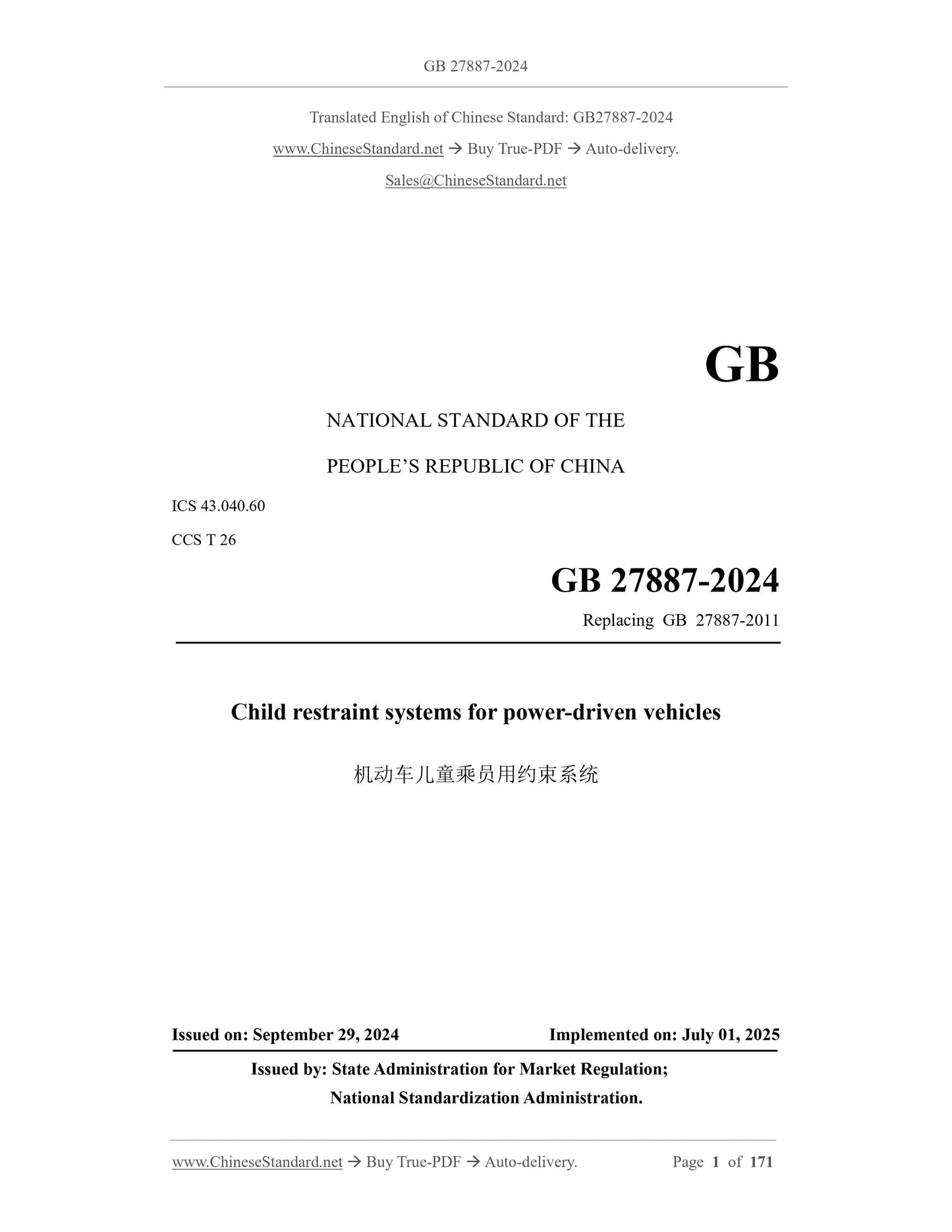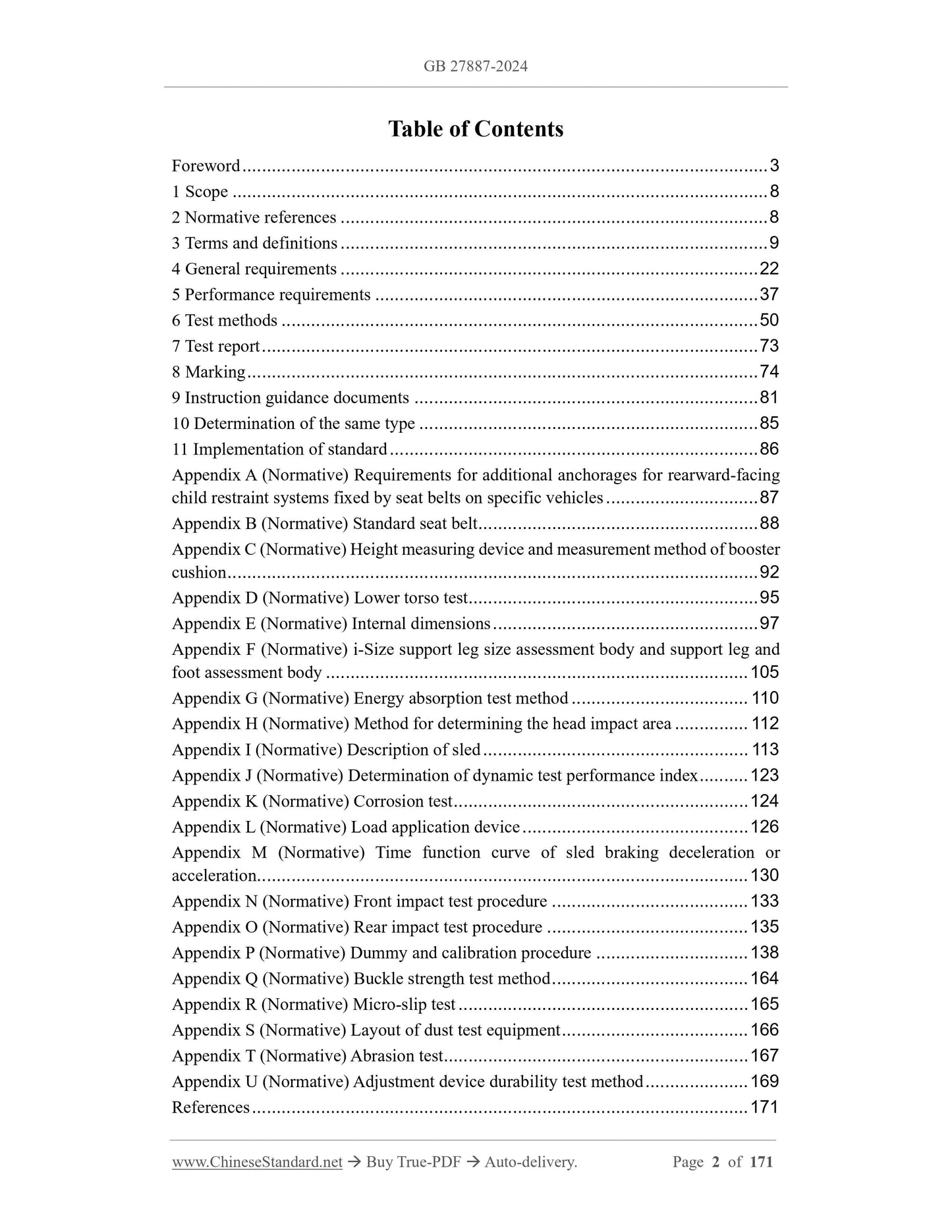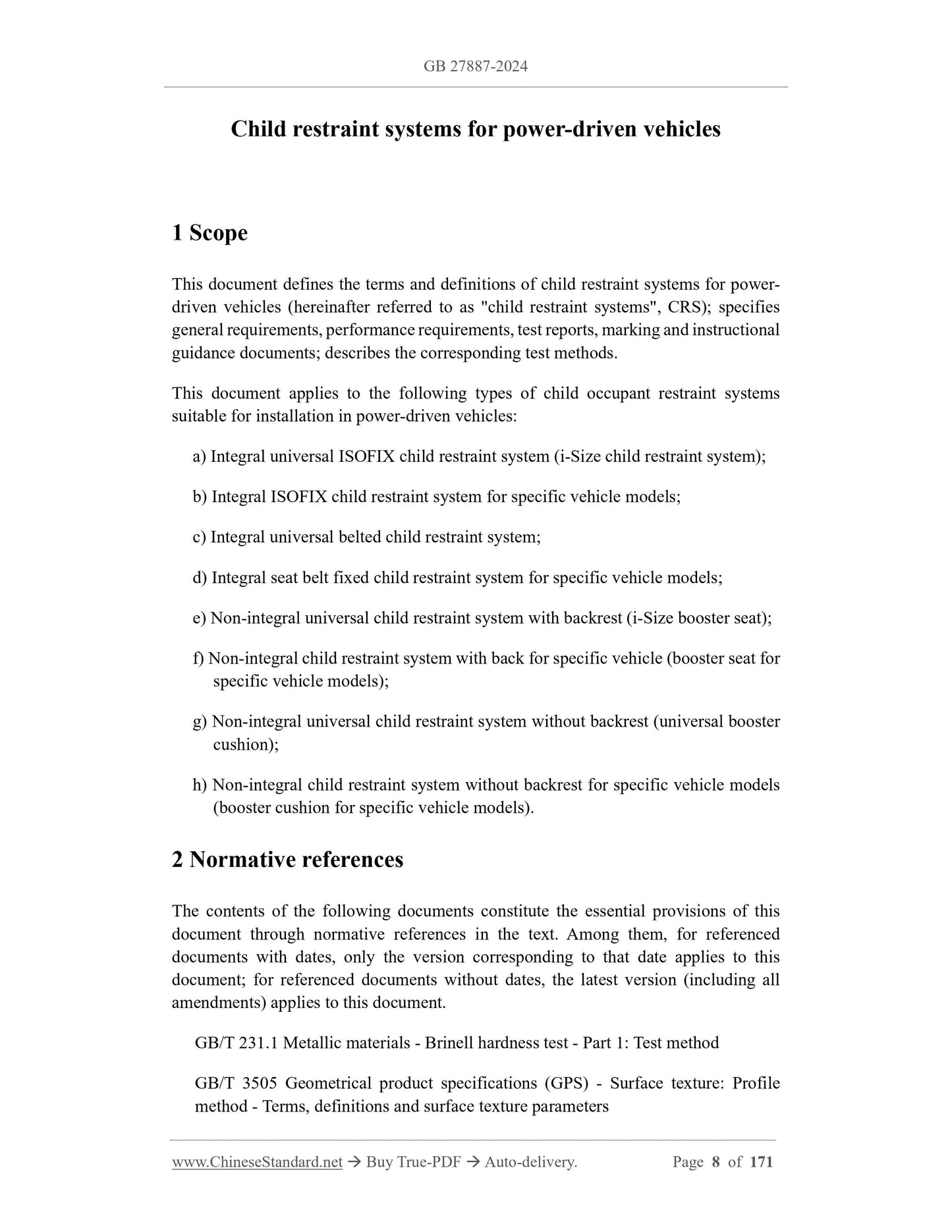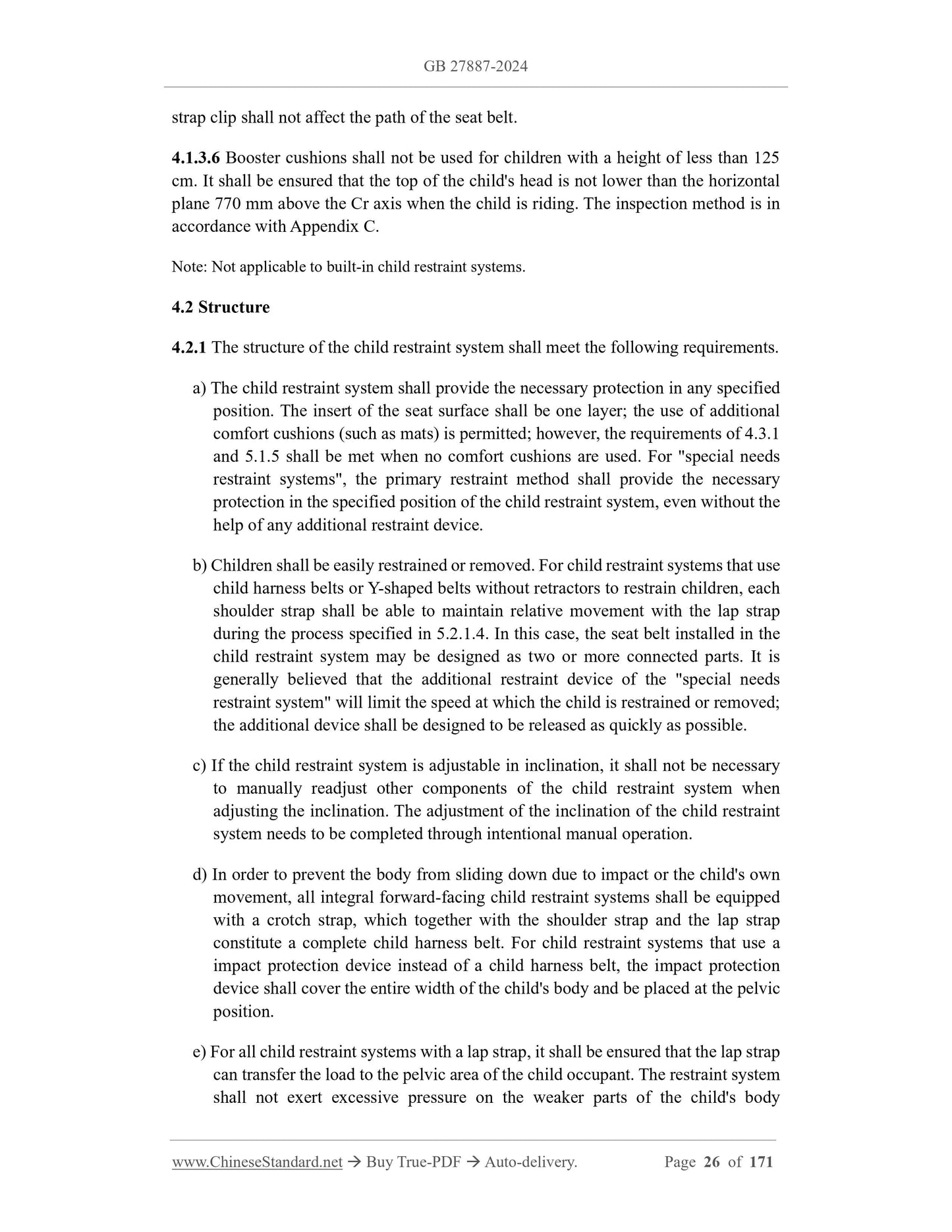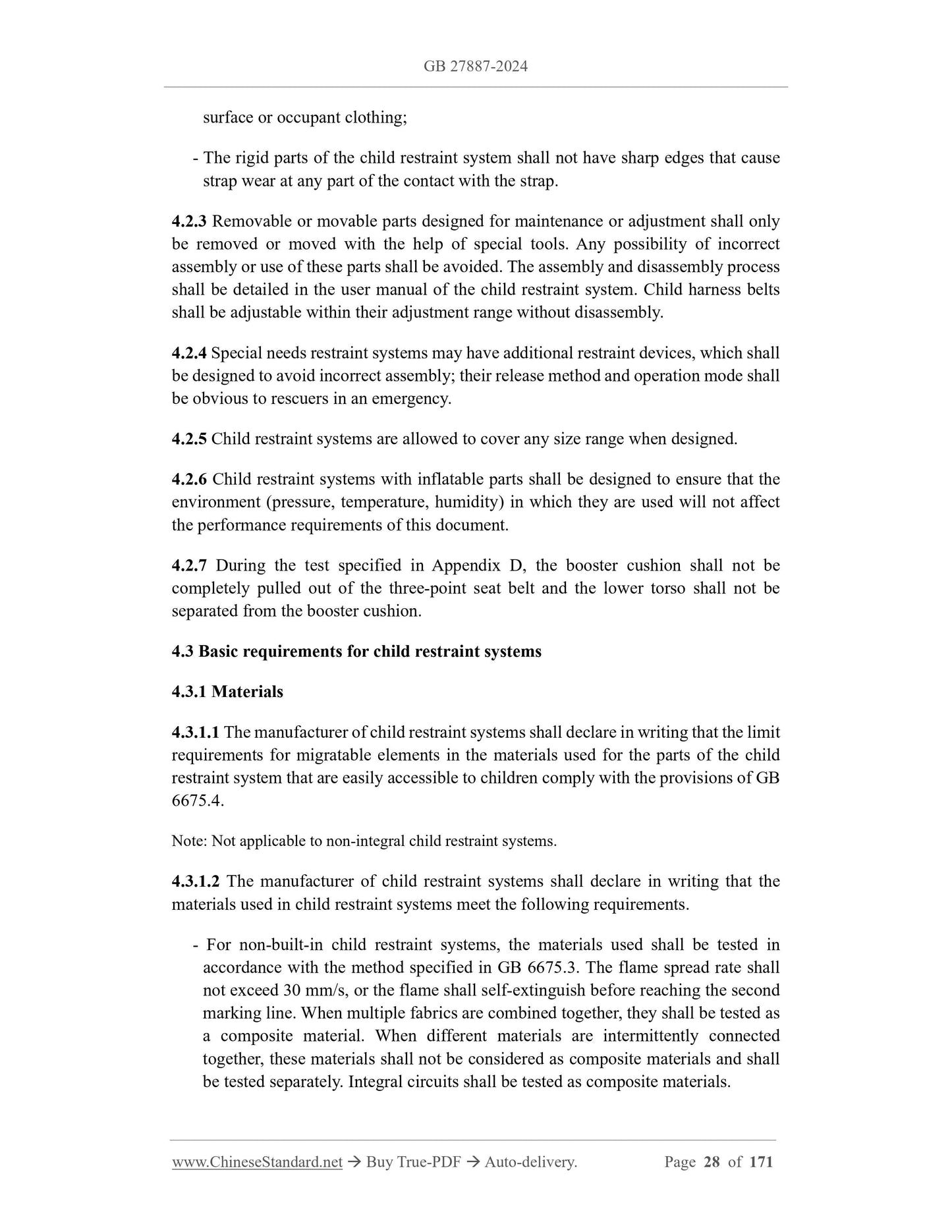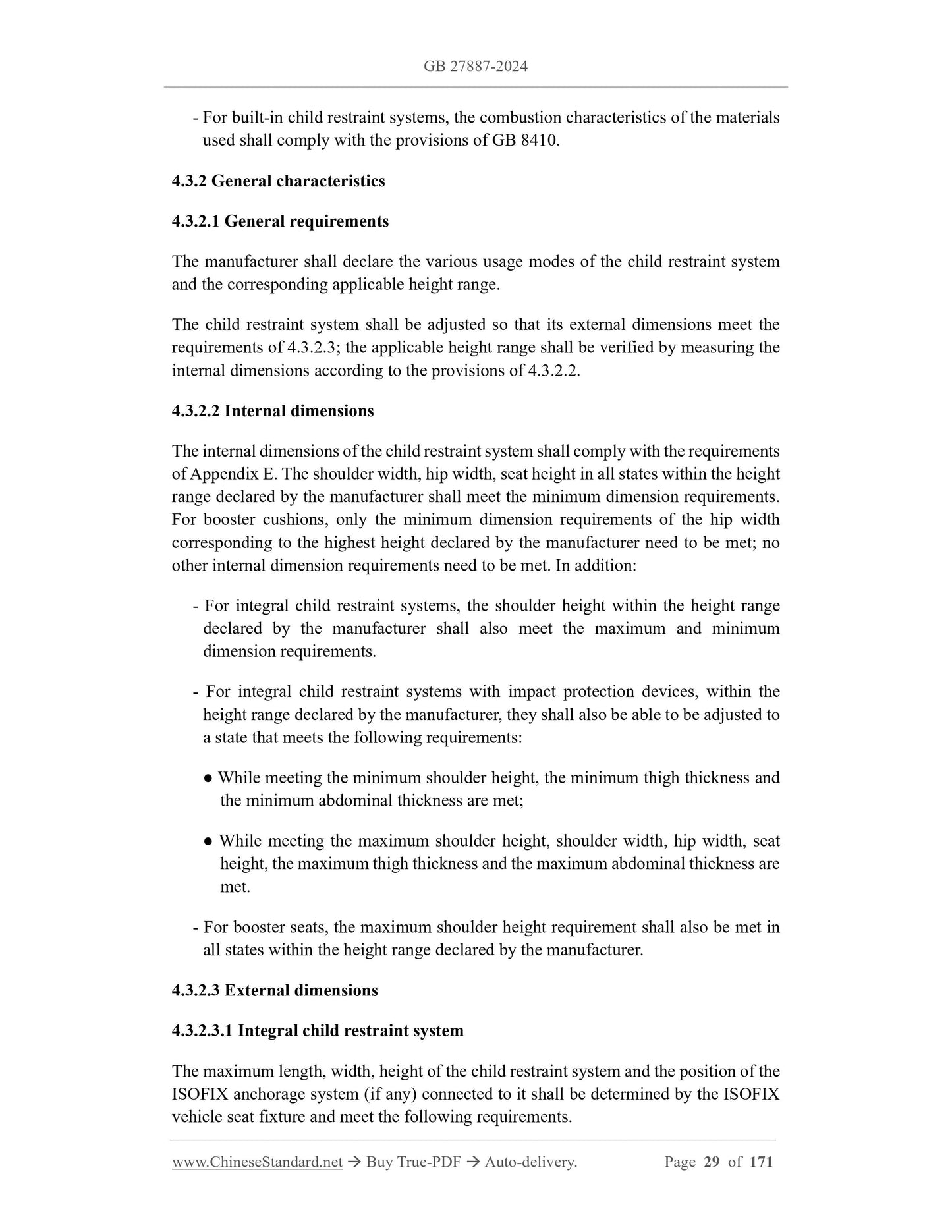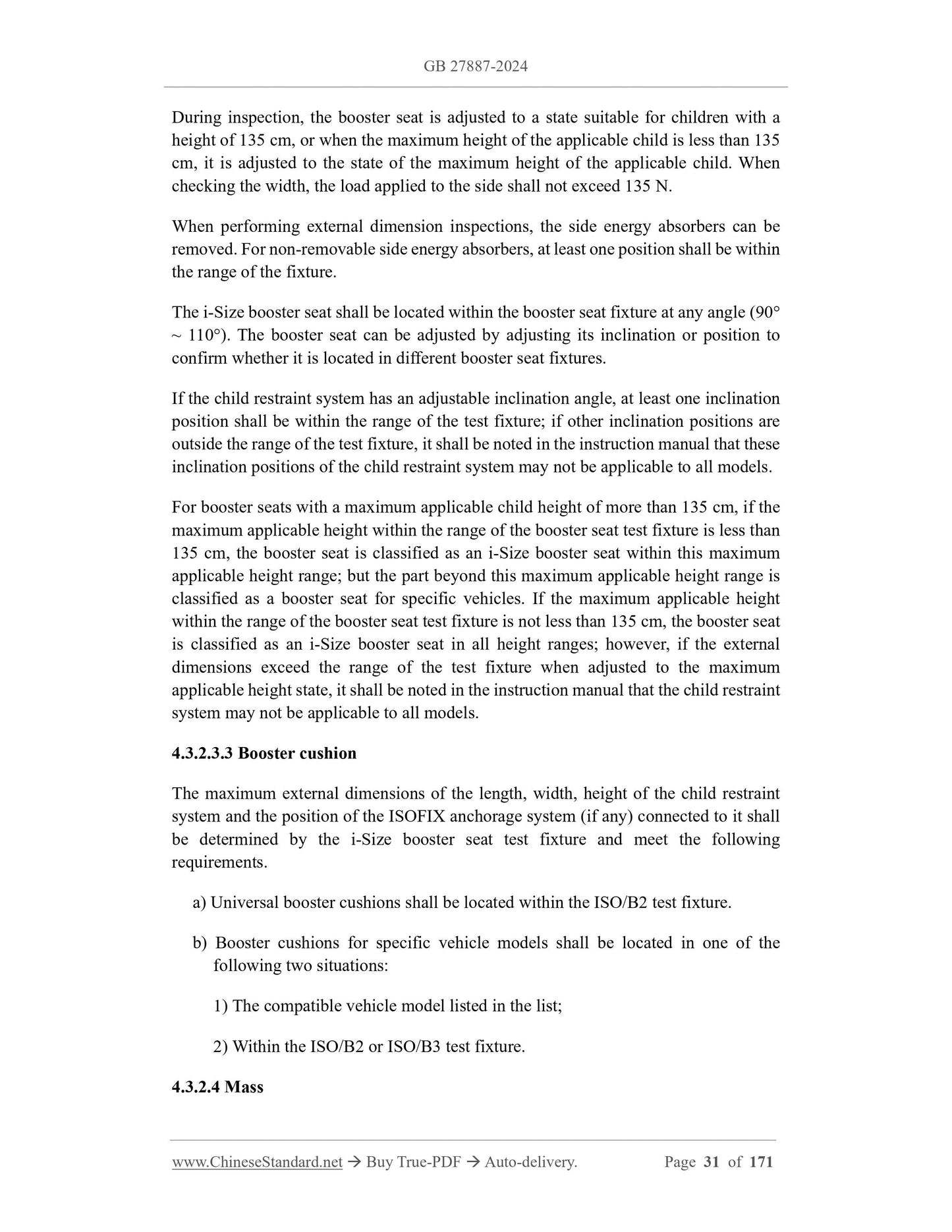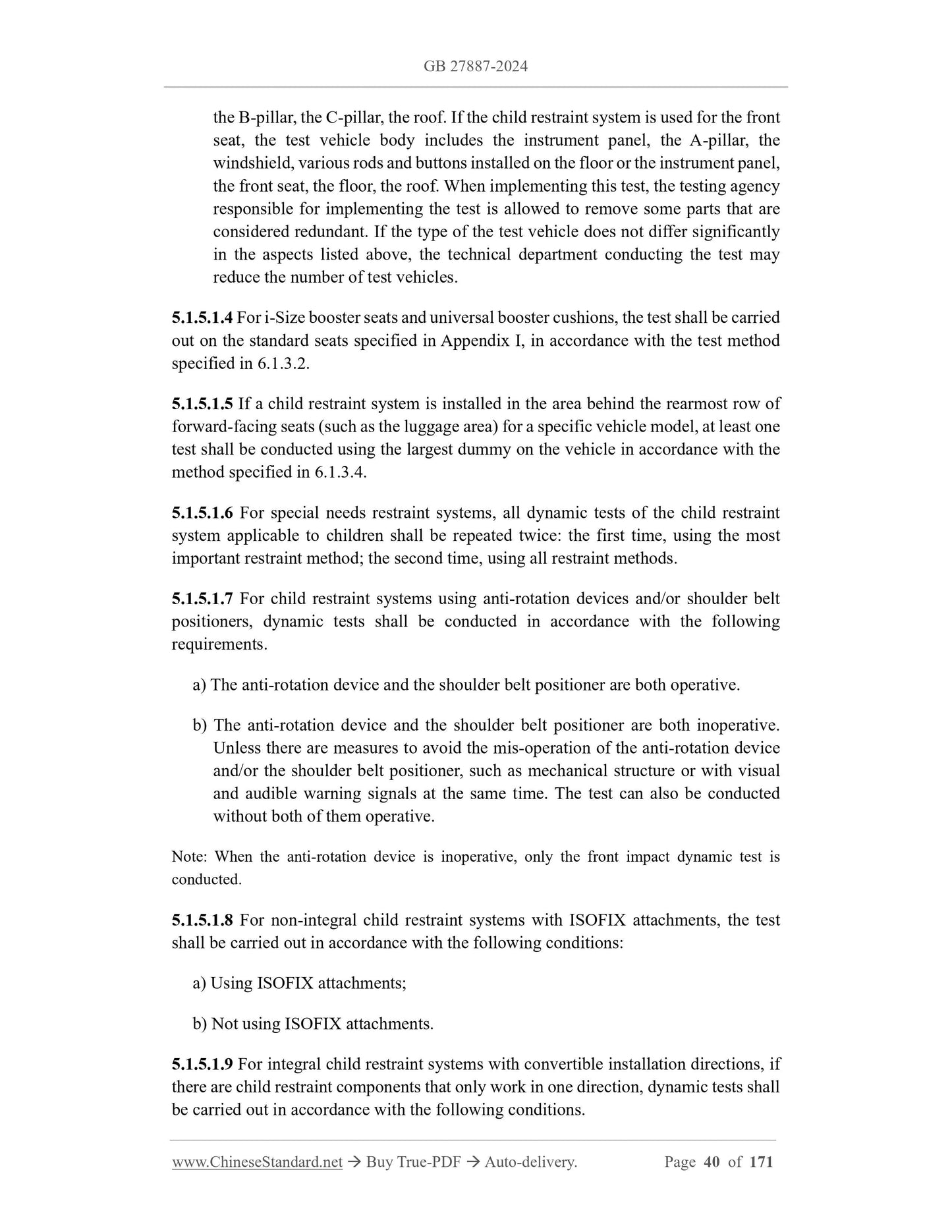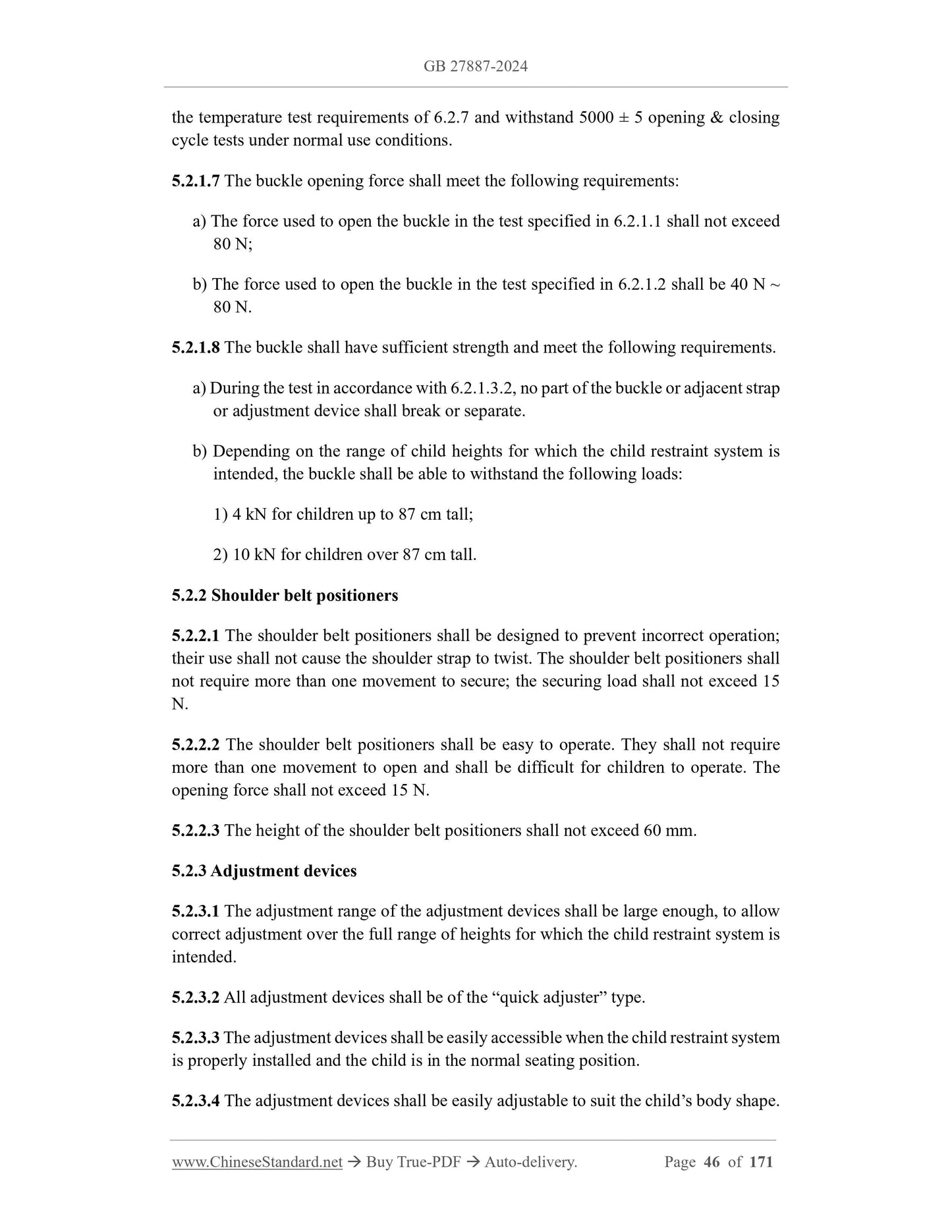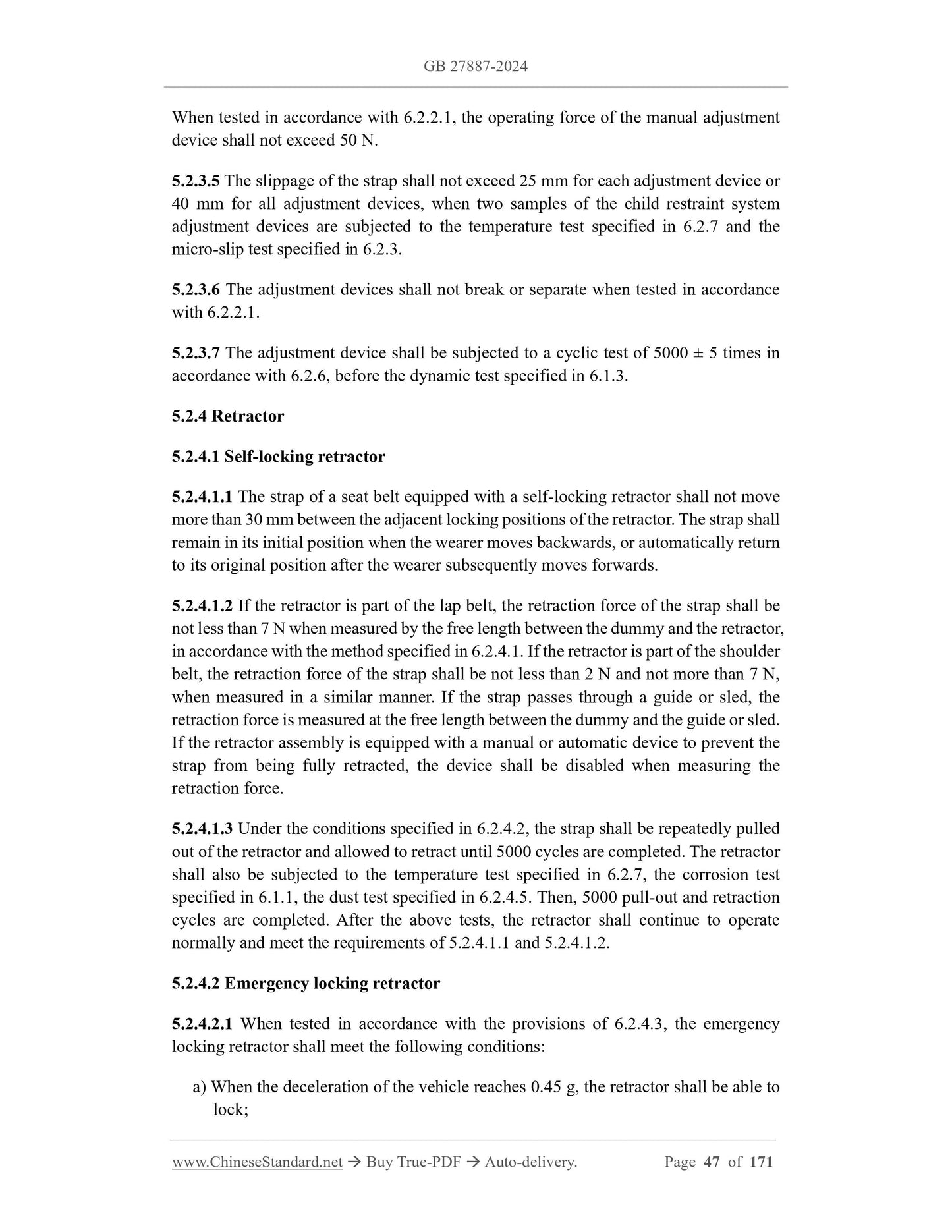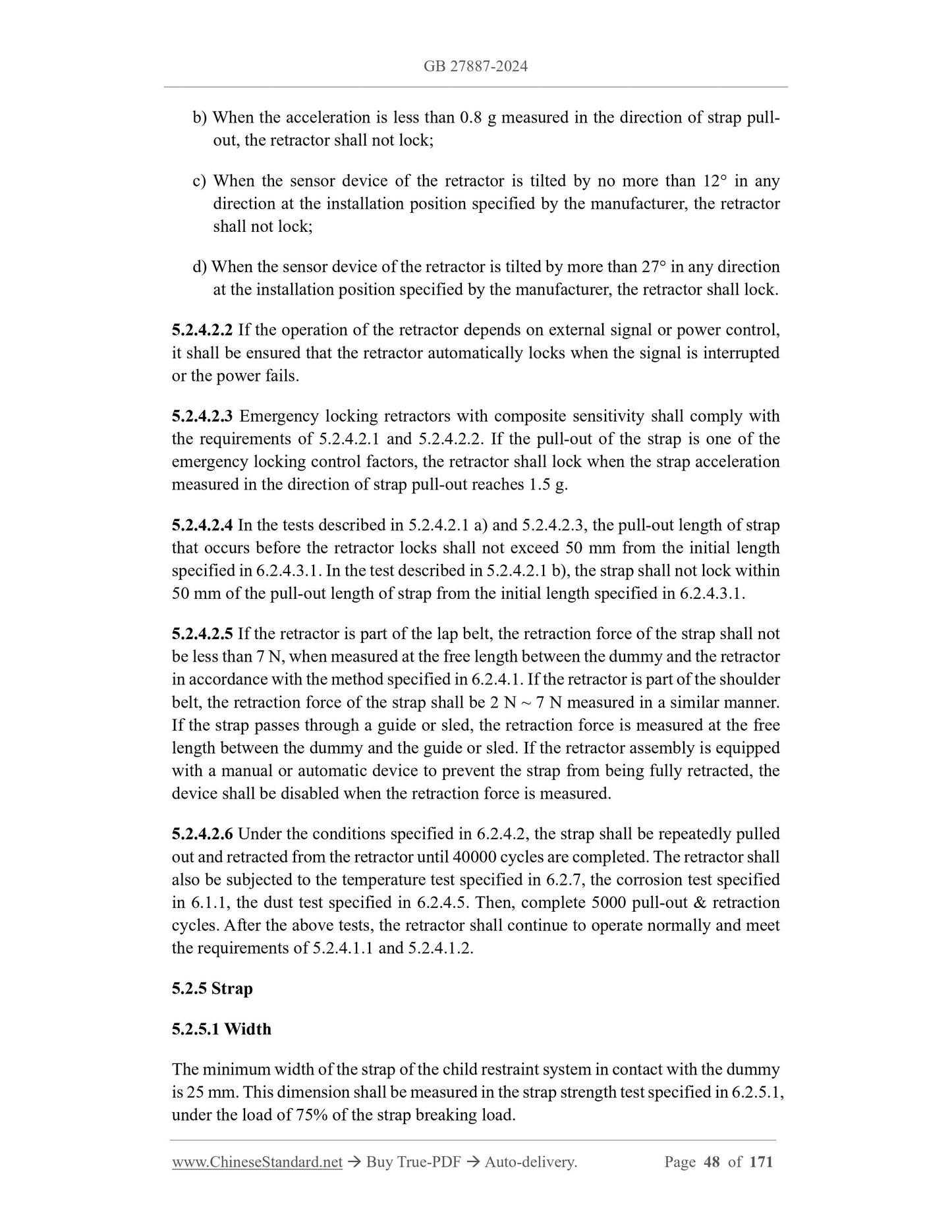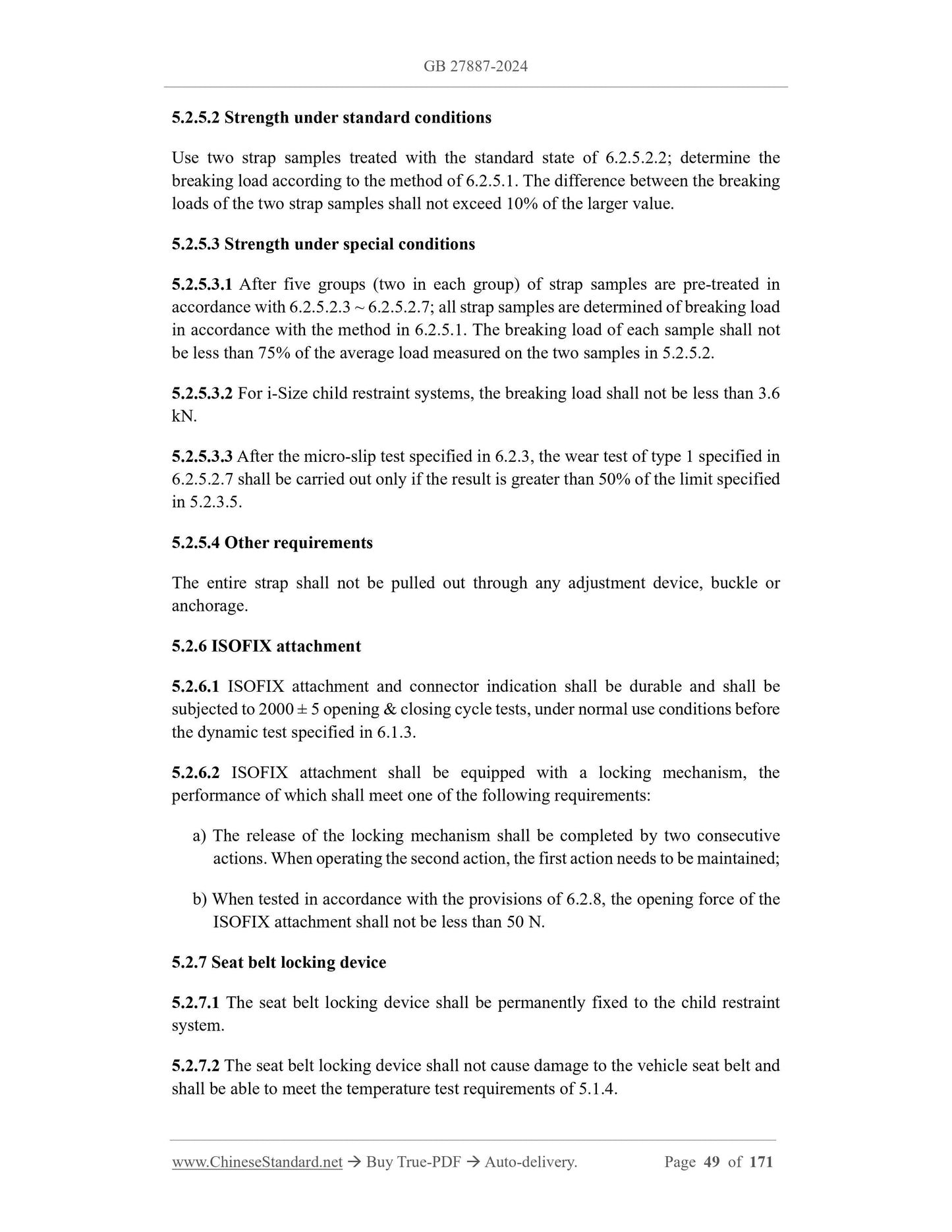1
/
of
12
www.ChineseStandard.us -- Field Test Asia Pte. Ltd.
GB 27887-2024 English PDF
GB 27887-2024 English PDF
Regular price
$1,910.00
Regular price
Sale price
$1,910.00
Unit price
/
per
Shipping calculated at checkout.
Couldn't load pickup availability
GB 27887-2024: Child restraint systems for power-driven vehicles
Delivery: 9 seconds. Download (and Email) true-PDF + Invoice.Get Quotation: Click GB 27887-2024 (Self-service in 1-minute)
Newer / historical versions: GB 27887-2024
Preview True-PDF
Scope
This document defines the terms and definitions of child restraint systems for power-driven vehicles (hereinafter referred to as "child restraint systems", CRS); specifies
general requirements, performance requirements, test reports, marking and instructional
guidance documents; describes the corresponding test methods.
This document applies to the following types of child occupant restraint systems
suitable for installation in power-driven vehicles.
a) Integral universal ISOFIX child restraint system (i-Size child restraint system);
b) Integral ISOFIX child restraint system for specific vehicle models;
c) Integral universal belted child restraint system;
d) Integral seat belt fixed child restraint system for specific vehicle models;
e) Non-integral universal child restraint system with backrest (i-Size booster seat);
f) Non-integral child restraint system with back for specific vehicle (booster seat for
specific vehicle models);
g) Non-integral universal child restraint system without backrest (universal booster
cushion);
h) Non-integral child restraint system without backrest for specific vehicle models
(booster cushion for specific vehicle models).
Basic Data
| Standard ID | GB 27887-2024 (GB27887-2024) |
| Description (Translated English) | Child restraint systems for power-driven vehicles |
| Sector / Industry | National Standard |
| Classification of Chinese Standard | T26 |
| Classification of International Standard | 43.040.60 |
| Word Count Estimation | 126,123 |
| Date of Issue | 2024-09-29 |
| Date of Implementation | 2025-07-01 |
| Older Standard (superseded by this standard) | GB 27887-2011 |
| Issuing agency(ies) | State Administration for Market Regulation, China National Standardization Administration |
Share
